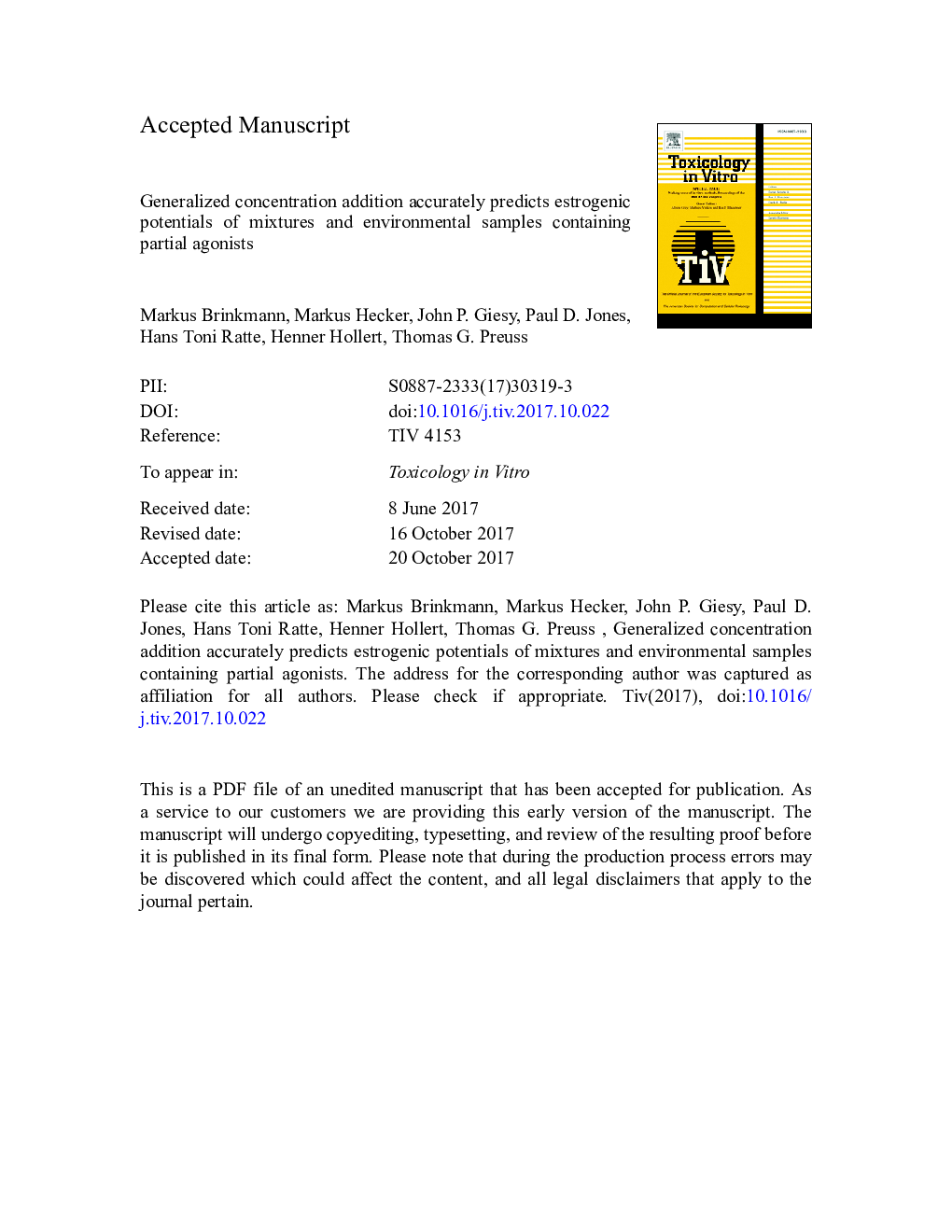| Article ID | Journal | Published Year | Pages | File Type |
|---|---|---|---|---|
| 8554180 | Toxicology in Vitro | 2018 | 33 Pages |
Abstract
Cell-based bioanalytical tools are considered one alternative to overcome limitations of sensitivities of instrumental, analytical chemistry for monitoring estrogenic chemicals in the environment. Because these tools also reflect non-additive interactions of chemicals in mixtures, their outcomes often deviate from outcomes of chemical analytical approaches that assume additivity, e.g. the concentration addition (CA) model. Often this is because CA is unable to adequately represent effects of partial agonists, i.e. estrogens with lesser efficacies compared to 17β-estradiol. A generalized concentration addition (GCA) model has been proposed to address this shortcoming. In the present study, we investigated effects of mixtures of isomers of nonylphenol as partial model agonists in a cell-based estrogenicity assay. Whether the GCA model was able to more accurately predict the outcomes of these and previously published mixture experiments was evaluated, as well as the potency of a set of comprehensively characterized sewage effluent samples, compared to CA. If samples contained partial agonists, the GCA model consistently predicted potencies of mixtures and extracts of environmental samples more accurately than did the CA model. These findings enable more accurate estimations of potencies of estrogenicity explained by concentrations of agonists and partial agonists, thus significantly improving the ability to identify causative chemicals.
Keywords
Related Topics
Life Sciences
Environmental Science
Health, Toxicology and Mutagenesis
Authors
Markus Brinkmann, Markus Hecker, John P. Giesy, Paul D. Jones, Hans Toni Ratte, Henner Hollert, Thomas G. Preuss,
